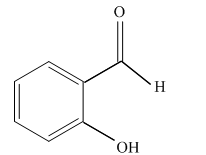
(a)
Interpretation:
Write a structural formula for the principal organic product formed by treating with following compound with

Concept Introduction:
Reduction is the process of addition of hydrogen to the compound.
(b)
Interpretation:
Write a structural formula for the principal organic product formed by treating with following compound with

Concept Introduction:
Reduction is the process of addition of hydrogen to the compound.
(c)
Interpretation:
Write a structural formula for the principal organic product formed by treating with following compound with

Concept Introduction:
Reduction is the process of addition of hydrogen to the compound.
(d)
Interpretation:
Write a structural formula for the principal organic product formed by treating with following compound with

Concept Introduction:
Reduction is the process of addition of hydrogen to the compound.
Trending nowThis is a popular solution!

Chapter 17 Solutions
Introduction to General, Organic and Biochemistry
- 17-60 1-Propanol can be prepared by the reduction of an aldehyde, but it cannot be prepared by the acid catalyzed hydration of an alkene. Explain why it cannot be prepared from an alkene.arrow_forward17-3 1 Draw a structural formula for the principal organic product formed when each compound is treated with K2Cr2O7/H2SO4. If there is no reaction, say so. (a) Butanal (b) Benzaldehyde (c) Cyclohexanone (d) Cyclohexanolarrow_forward17-73 Alcohols can be prepared by the acid-catalyzed hydration of alkenes (Section 12-6B) and by the reduction of aldehydes and ketones (Section 17-4B). Show how you might prepare each of the following alcohols by (1) acid-catalyzed hydration of an alkene and (2) reduction of an aldehyde or a ketone. (a) Ethanol (b) Cyclohexanol (c) 2-Propanol (d) 1-Phenylethanolarrow_forward
- 17-62 Show how to bring about these conversions. In addition to the given starting material, use any other organic or inorganic reagents as necessary. (a) 1-Pentene to 2-pentanone (b) Cyclohexene to cyclohexanonearrow_forwardGive the main organic product for the following reaction: CH2OH OH H3O* CH3CH2CH2OH OH OHarrow_forwardAn important step in one synthesis of carboxylic acids is the deprotonation of diethyl malonate and its alkyl-substituted derivative: Base CH;CH2O OCH,CH3 CH;CH,0 OCH2CH3 H2 Diethyl malonate Base CH;CH,0 °C `OCH,CH3 CH;CH,O OCH,CH3 R Alkyl substituted diethyl malonate NaOH can deprotonate diethyl malonate effectively, but NaOC(CH3)3 is typically used to deprotonate the alkyl-substituted derivative. Explain why.arrow_forward
- What is the major organic product obtained from the following reaction? OH OH H,0 CH;CH,CH,CH,C=CH OH HgSO, H,SO, ÓH O 1 O 2 O 3 O 4arrow_forwardIndicate the major organic product from the reaction shown. NH NABH3CNarrow_forwardCCH H20, H2SO4 H9SO4 CH3 Alkynes do not react directly with aqueous acid as do alkenes, but will do so in the presence of mercury(II) sulfate as a Lewis acid catalyst. The reaction occurs with Markovnikov regiochemistry, so the OH group adds to the more highly substituted carbon and the H adds to the less highly substituted carbon. The initial product of the reaction is a vinyl alcohol, also called an enol. The enol immediately rearranges to a more stable ketone via tautomerization. Draw curved arrows to show the movement of electrons in this step of the mechanism. Arrow-pushing Instructions Hjö: -CH3 -CH3 H3O*arrow_forward
- The ketone 2-heptanone has been identified as contributing to the odor of a number of dairy products, including condensed milk and cheddar cheese. Describe the synthesis of 2-heptanone from acetylene and any necessary organic and inorganic reagents.arrow_forwardHow many different organic products are possible when pentan-2-ol is heated in the presence of acid? Ignore any stereoisomers (cis/trans isomers).arrow_forwardWhat is the major organic product obtained from the following reaction? A) 2 B) 1 C 3 D 4 OH HCI fooarrow_forward
 Introduction to General, Organic and BiochemistryChemistryISBN:9781285869759Author:Frederick A. Bettelheim, William H. Brown, Mary K. Campbell, Shawn O. Farrell, Omar TorresPublisher:Cengage Learning
Introduction to General, Organic and BiochemistryChemistryISBN:9781285869759Author:Frederick A. Bettelheim, William H. Brown, Mary K. Campbell, Shawn O. Farrell, Omar TorresPublisher:Cengage Learning

